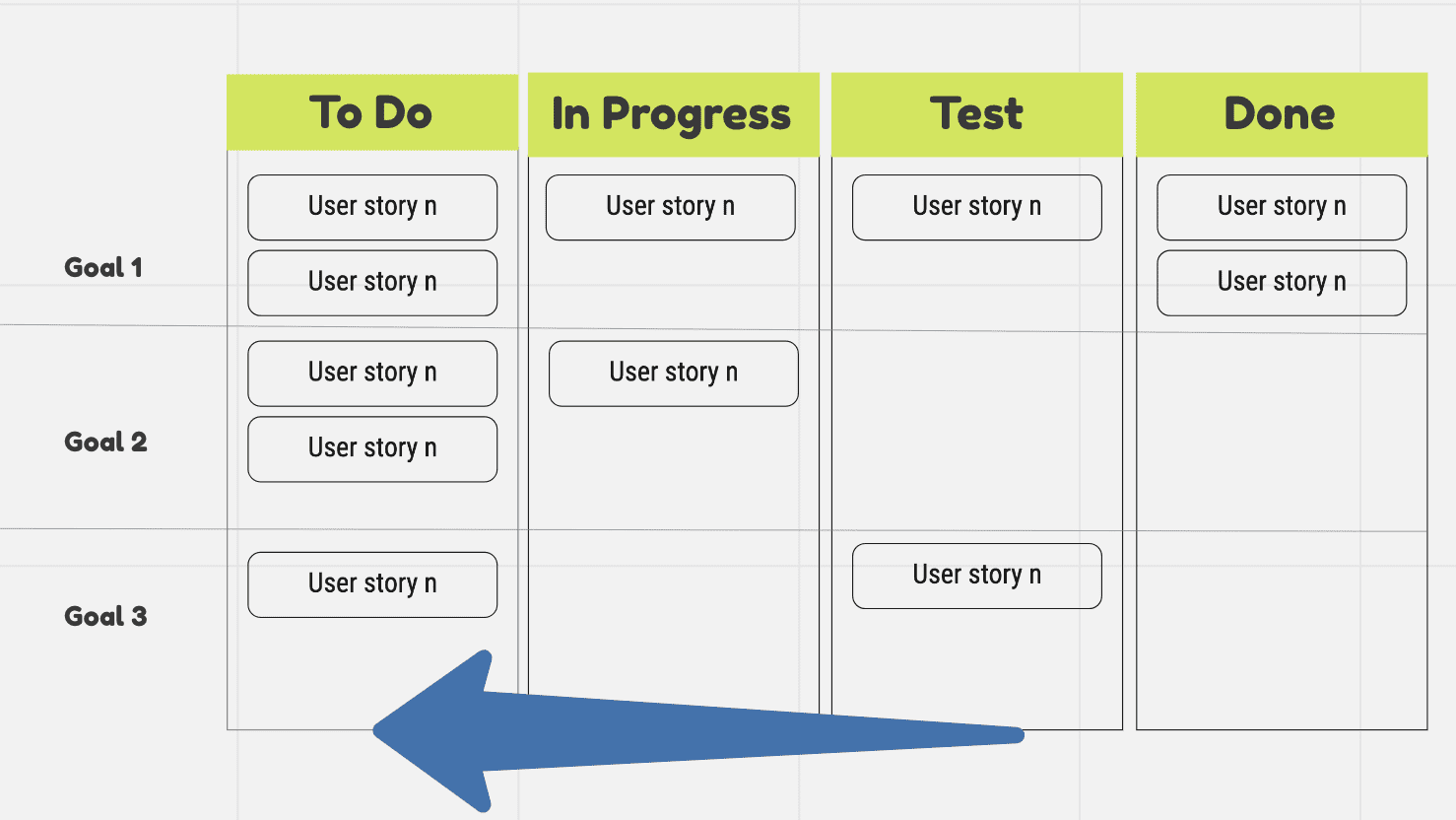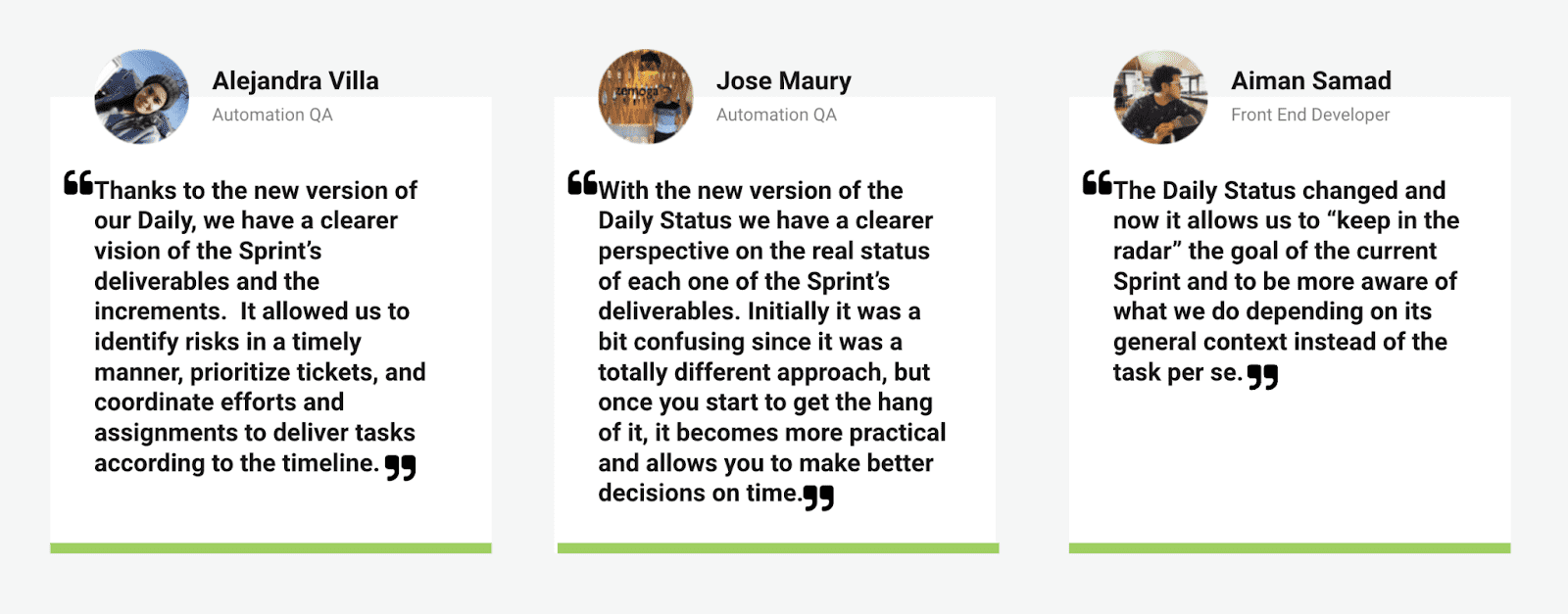I recently talked about last year’s Scrum Guide changes. For simplicity, I split them into two posts: the first one, about people-focused changes and the second one about processes . In this new entry, I want to dig deeper into those process-focused changes: they removed the usual three questions for the Daily Status: “What did I do yesterday?”, “What am I doing today?”, and “Do I have blockers?”
Now that these questions have disappeared, what are we supposed to talk about instead?
In my last post, I added a proposal for running Daily Status meetings, and I wrote it at the same time as I was implementing it with my team. Now, I want to share my experience with you, the value I have found, and a practical step-by-step guide for implementing it.
I hope these words will encourage you to embrace the change within your team.
So, what is this about?
One aspect that didn’t change is the Daily’s main objective, which isn’t to follow up on people's work, instead, you're supposed to follow up on the work itself. Why? Because that’s the value you are delivering to your client and you’ll want to ensure that it is done fulfilling quality, expectations and budget, of course.
I know, this all sounds great, but is still somewhat ethereal… That’s the reason I’m bringing up a simple step-by-step guide to start using the “Walking The Board”:
1. You need a Sprint Goal
Something your team commits to work on and finish during the Sprint Planning.
2. Split your board according to the Sprint Goal
You should have a way to classify the user stories following the Sprint Goal and display them accordingly on your board, this way your team won’t lose focus and will work towards the same goal:
3. Focus on finishing tasks
Start the meeting by reviewing the “closest-to-done” column. Each assignee will talk about their progress, next steps, and an ETA. By doing this, you will ensure that you follow the priorities and also have conversations around what’s left to finish the upcoming increment and allow the team to synchronize their efforts.
4. Ask for feedback... after a while
Changes are hard, people can become resistant to them at the beginning. Let them enjoy and experiment a while and then after two or three weeks, you can start collecting feedback, why? So you can make adjustments to match your process to your team’s needs.
Why is it likely to work for all kinds of teams?
Whether you are working on IT or not, you are part of a big or a small team, or even if you are producing content for any kind of industry, this practice should work for you.
Convenience
Human beings tend to better understand things when they are explained in a logical and consequential way. This method ensures that you follow the logical steps to deliver value keeping in mind priority and schedule.
Time
It would take more time for everyone to talk about their tasks without having a point, but when your task is part of something bigger, you will focus on sharing dependencies and interactions that everyone understands.
Focus
Has it ever happened to you that you find yourself multitasking instead of paying attention to your teammate during the Daily Status?... This gets even worse when someone asks you a question and you have to ask them to repeat it! This simple but powerful change of order would prevent lack of attention since you wouldn’t know when someone will require something from you.
Still doubtful? Perfect timing for some testimonials!
After 2-3 weeks of implementing this with my team, I asked them for some feedback, here’s what they have to say about ‘Walking The Board’:
I’m a believer now! How can I implement these changes soon?
I know it wouldn’t be hard to convince you… now it’s time for you to get your team on board!
Start by defining your Sprint Goal(s), structuring your follow-up tools to classify tasks accordingly, and preparing a nice and clear presentation to your team explaining this new way. Don’t forget to mention all the benefits that ‘Walking The Board’ will bring to the table and to ask questions until you are sure everyone is clear.
If you want to learn more about how we at Zemoga walk the board across different industries, contact us now!

